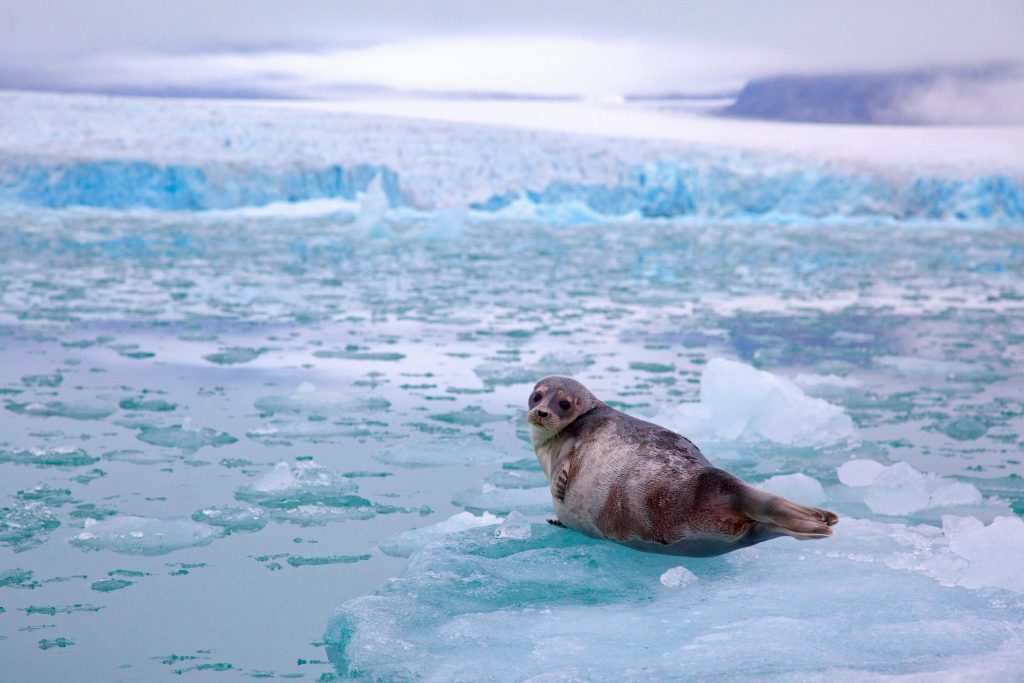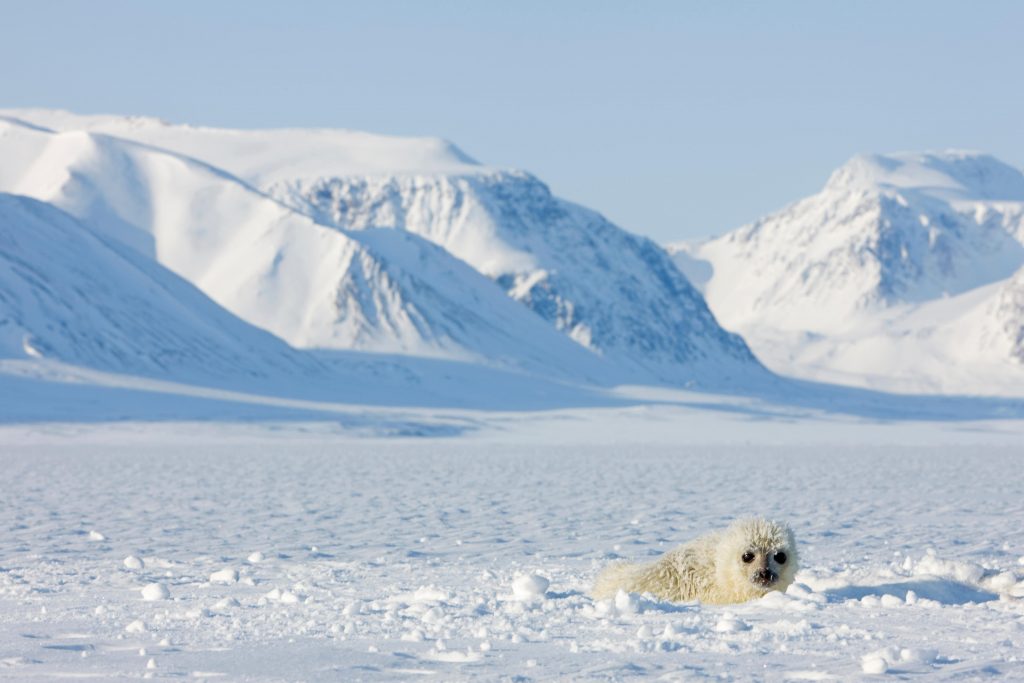Earth Rangers, we hope that after a year of being a Ringed Seal rescuer, you’re as excited about these perfect pinnipeds as we are! As we wrap up this project, let’s have a quick refresher course about what makes the world’s smallest seal so super.
1. Ringed Seals live in the Arctic, and spend lots of time swimming in the frigid waters (they can dive for up to 45 minutes at a time!). They don’t mind the chill because they have a thick layer of blubber to keep them warm.

2. These seals enjoy cod – it’s what most of their diet is made of – but they’ll also eat other Arctic fish and shellfish.
3. Ringed Seals carve out snow dens to protect themselves from predators. Each den is built with a hole in the ice so they can grab a quick snack from the water below!
4. Ringed Seals give birth to their babies (called pups) in special lairs on the ice. Arctic ice is super important because it allows the babies to be protected from predators like polar bears.

5. Ringed Seal pups are adorable – they have a fluffy white coat of fur!
6. Ringed Seal claws are REALLY sharp – they can dig through up to six feet of ice to reach the water.
A Successful Campaign
Earth Rangers has been working with the W. Garfield Weston Foundation and researchers from the University of Manitoba to investigate what type of habitat Ringed Seals like best, and what effect climate change will have on their habitat. Thanks to the hard work of about 7,000 Earth Rangers like you, we’ve been able to purchase satellite collars for the seals. The collars allow the research team to track the movements of the Ringed Seal – and boy, do they move a lot! Some of the Ringed Seals that were tracked traveled extremely far distances – some of the farthest ever recorded for this type of seal!
The Next Steps
Now that we know where Ringed Seals prefer to live, the next thing to figure out is the ‘why’. Why do Ringed Seals choose certain habitats over others? Does it have to do with the depth of the water? Maybe water temperature or access to ice? Is climate change affecting the habitats these seals choose? Researchers are analyzing the data to try and answer those questions. So far, one hypothesis is that it might be more common for Ringed Seals to travel farther distances than experts initially thought. In the future, researchers may put collars on more seals. The more data the researchers can collect, the more useful and complete the information they’re tracking will be.
This has been a hugely successful campaign, Earth Rangers, and we’ve learned so much important information about these adorable animals, thanks to you! The Ringed Seal is an Arctic icon, and we want to be sure it’s surviving and thriving for generations to come!
Proudly Supported By | In Collaboration With |

So cute and thats great news about the campaign.
So cool I just love seeing it in the wild
Good videos!I like nature
Seal pups are so cute, must be a cool experience to research these animals
Wow
Wow amazing
Woooooow!!!!
I am so happy and snow ball is too you can hear him I bet